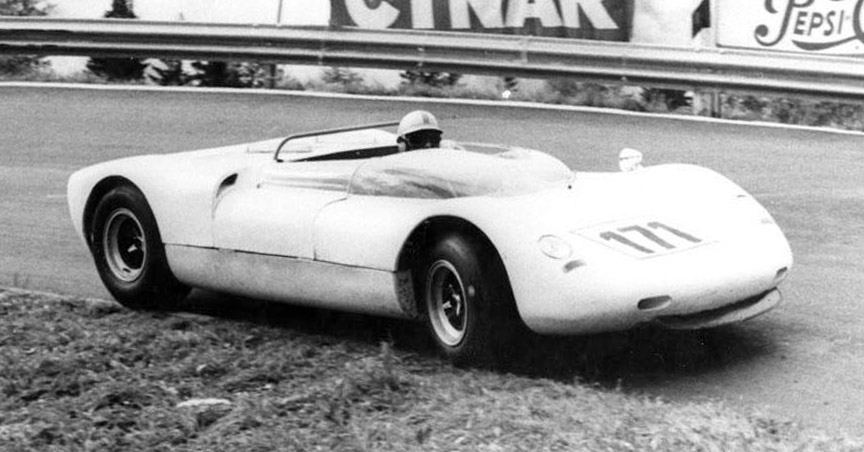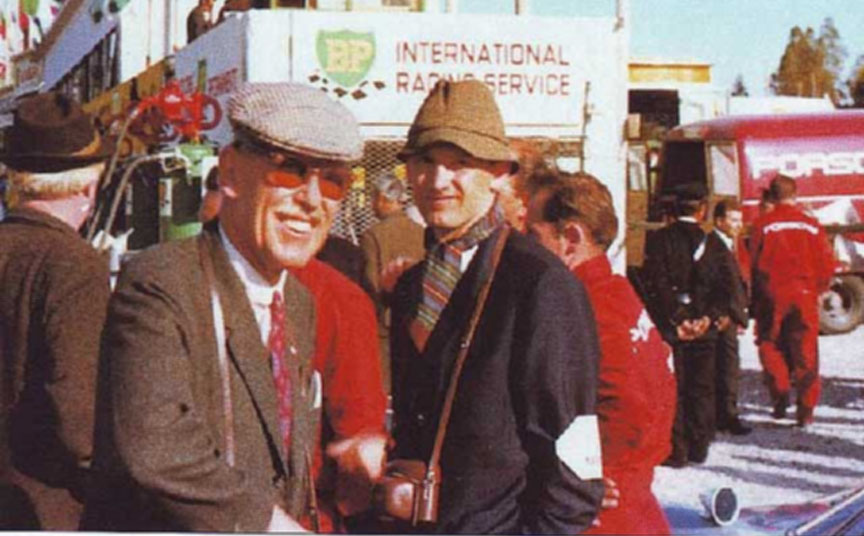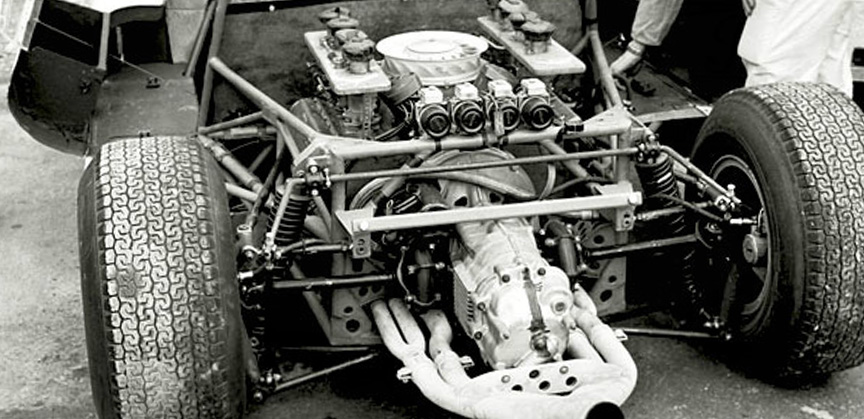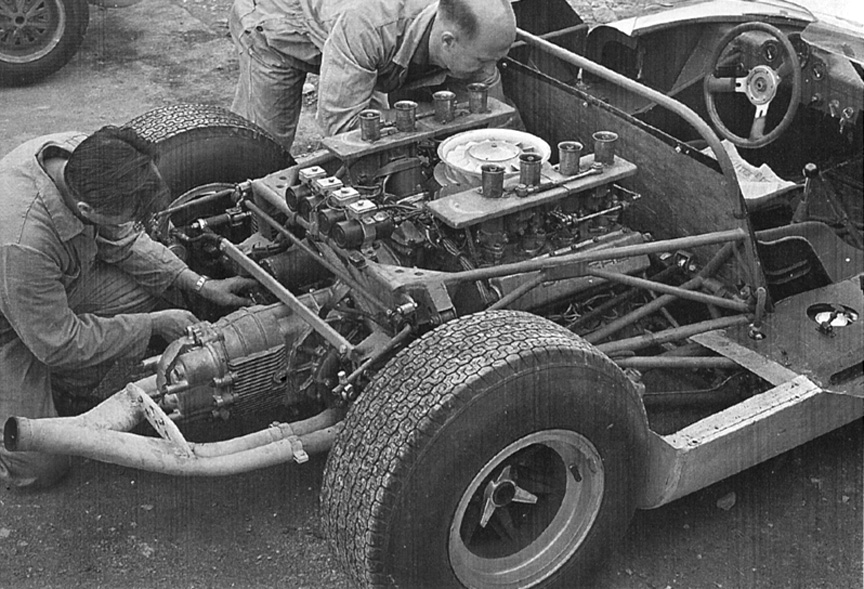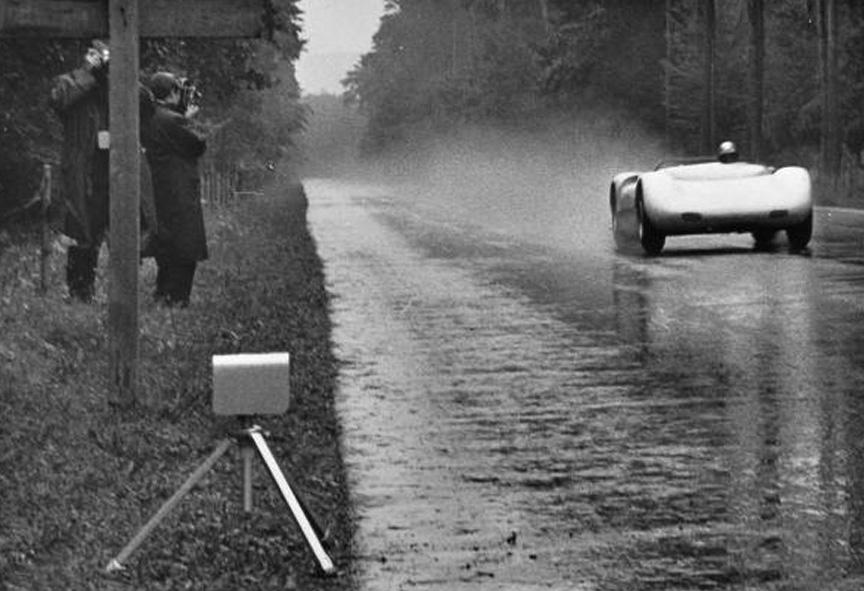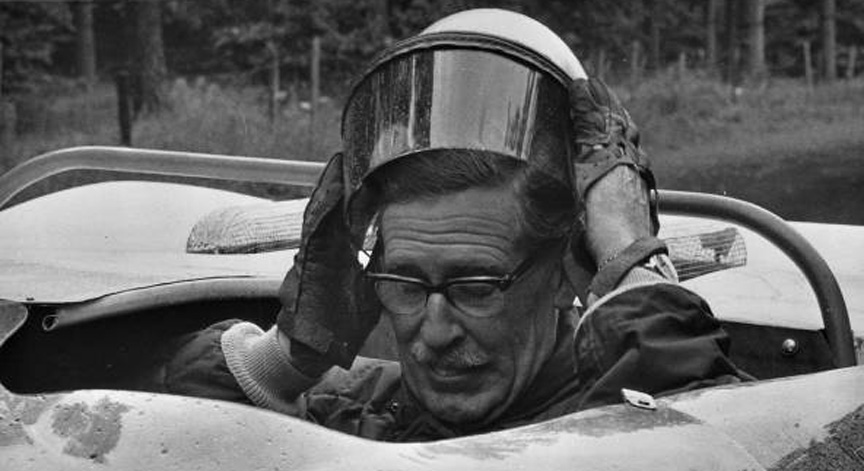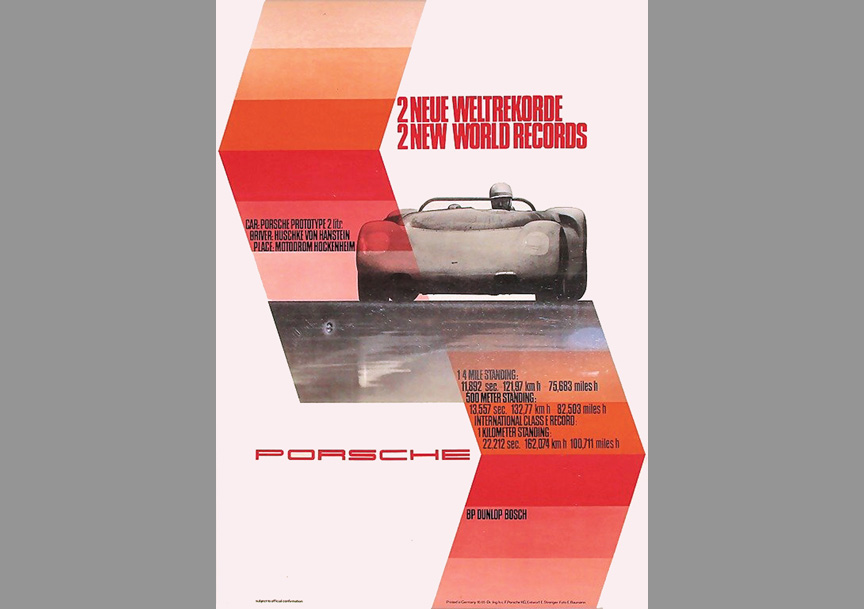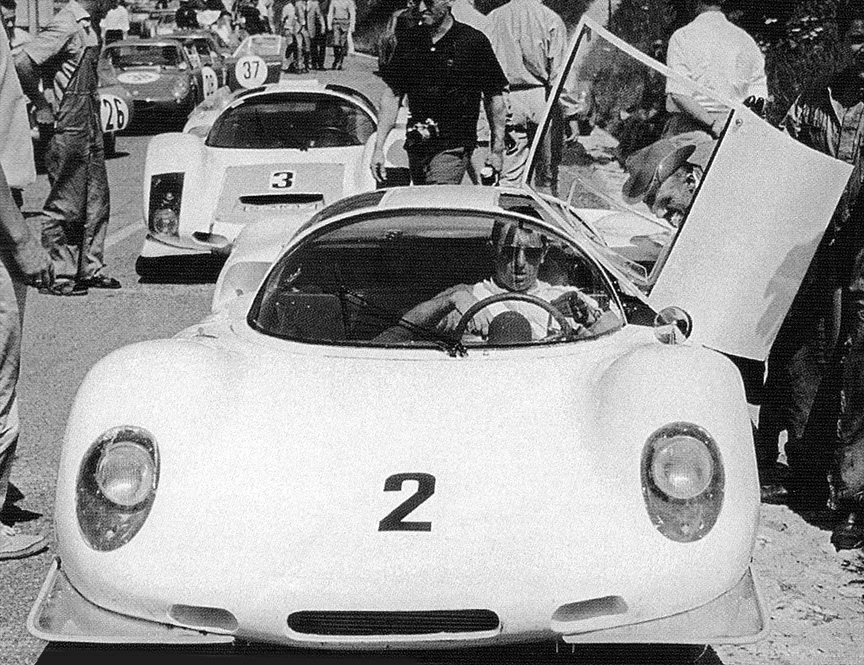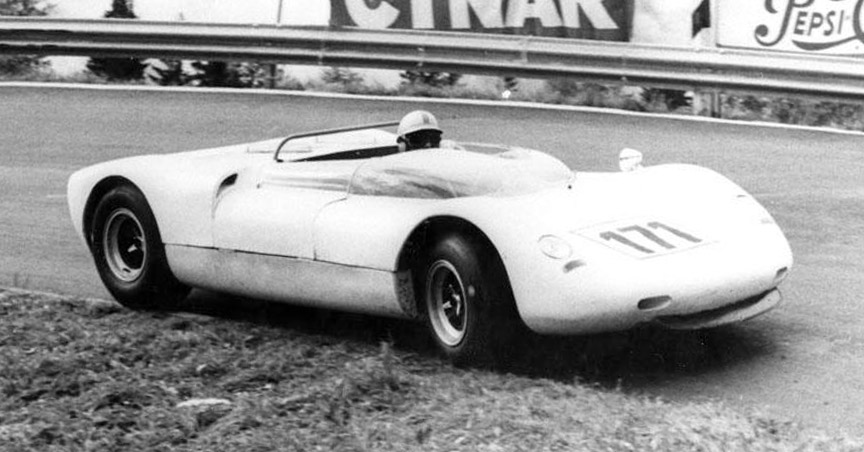Porsche 906 Ollon-Villars (Spyder) (1965)
Engine: Porsche type 771, 2.0-litre flat-8, 191 kW
In 1963, a very special man had started to work in the Porsche company – Ferdinand Karl Piëch. In 1931, the Porsche engineering company was founded by his grandfather Ferdinand Porsche and co-founded by his father Anton Piëch. The Porsche car company, where he now worked, was founded by his uncle Ferry Porsche. On Ferdinand Piëch’s suggestion, a dedicated race car design department was set up in 1965 and Hans Mezger was appointed as the head of it. Mezger involved in designing Porsche’s flat-8 and flat-6 engines and was now also the head of design and project management of the 906.
Although Porsches with chassis numbers starting with “906” were made earlier, those were 6-cylinder 904 Coupés and 8-cylinder 904 Spyders. The 904 had fiberglass body bonded to steel frame, both members supporting each other. The last 904/8 Spyder, chassis 906-010, was only used for practicing at the Rossfeld hillclimb on June 13, 1965, and then a new car was created using the same chassis number. The 8-cylinder engine and gearbox combo was carried over, everything else was new. The first “real 906” was born. “Real” meant it was a tubeframe car.
Typical Porsche wheels at the time were in the size of 15″, but Ferdinand Piëch wanted to use Formula 1 suspension and tyre setup in order to get the center of gravity closer to the ground, to use the best racing tyres on the market and to save weight. There was no time to develop Porsche’s own solution, so, uprights and 13″ wheels were used from a Lotus F1 car. One of Piëch’s tasks was to create ultralight racing cars. The Ollon-Villars 906 weighed just 488-530 kg/1076-1168 lb. The 906 Spyder was the first Porsche racing car built under Ferdinand Piëch’s orders and there could be only a person as determined as Piëch to use Lotus parts on a Porsche. It was Piëch’s handwriting to get what he wanted, no matter how, with only the top result in mind. Although these were the early days for Piëch, they showed what kind of an engineer and manager he was.
First public outing for the 906 Spyder or Bergspyder (“mountain spyder”) was in August 1965 in Switzerland, at the Ollon-Villars World Championship hillclimb event (Championnat du Monde Ollon-Villars). The 906 Spyder scored second driven by Gerhard Mitter. The car was used only in a few events, but also for setting some records.
On September 30, 1965, Fritz Huschke von Hanstein took the 906/8 Spyder to Motodrom Hockenheim. The track was 6.8 km long and had two long straights for the acceleration tests and record attempts.
With the 2-litre Porsche prototype, von Hanstein set the following records:
1/4 mile from standing start: 11.892 sec. @ 121.97 km/h (75.683 mph)
500 m from standing start: 13.557 sec. @ 132.77 km/h (82.503 mph)
International class E record on 1 km from standing start: 22.212 sec @ 162.074 km/h (100.711 mph)
This spyder, chassis 906-010, was then converted to a targa (a coupé with removable roof panel). The 906-010 Targa became the prototype of the Porsche 910 Targa that followed it very soon. The 906-010 Targa was first raced at the Rossfeld hill climb in Germany on June 12, 1966, which it won.
To win the 1966 European Hill Climb Championship, Gerhard Mitter mostly used the 906-010 Targa, but also the new 910 Targa. Still in its Targa body form, the 906-010 belongs to the Porsche Museum.
